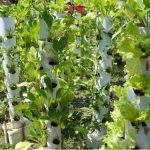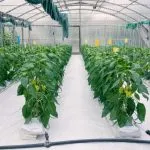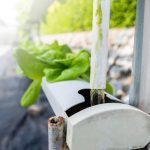Hydroponic gardening, like all agricultural practices, comes with its unique set of challenges. One such pesky problem that hydroponic growers often confront is the emergence of algae.
Algae are simple, usually aquatic organisms that fall under the broad category of photosynthetic eukaryotes. They range in size from microscopic single-celled entities to large seaweeds, and they can exhibit a variety of colors including green, red, and brown. These organisms thrive in environments rich in light and nutrients – conditions that are quite common in hydroponic setups.
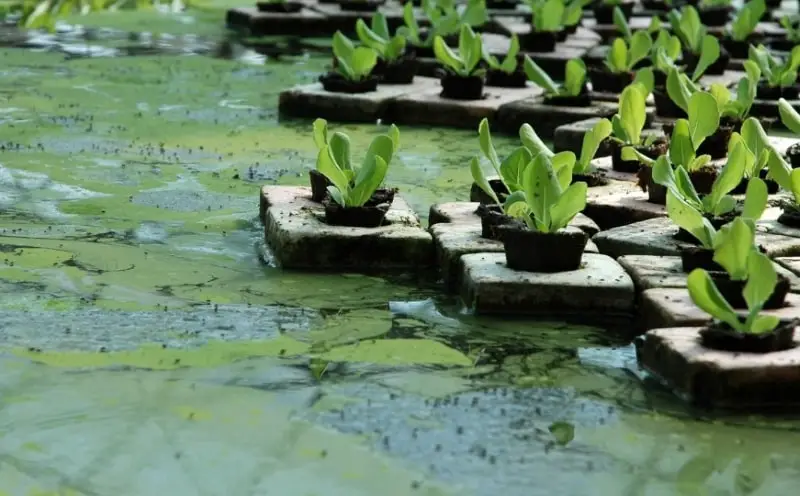
Although algae themselves may not directly harm your plants, their rampant growth can cause significant issues within a hydroponic system. Algal blooms compete for precious nutrients and oxygen meant for your plants, potentially stunting growth rates and reducing total yield. Moreover, as algal populations die off and decompose, they can foster an environment conducive to harmful pathogens that might jeopardize the health and productivity of your entire system.
Therefore, understanding how to prevent algae in hydroponics is crucial for maintaining an efficient and robust hydroponic setup. Read on as we delve into some practical strategies and tips for keeping these green invaders at bay.
- Understanding Algae Growth in Hydroponics
- How to Prevent Algae in Hydroponics Through System Design
- How To Keep Algae Out Of Hydroponics With Water Management Techniques
- How To Avoid Algae In Hydroponics With Temperature Control Strategies
- How To Prevent Algae In Water Plants With Nutrient Solution Management
- How To Get Rid Of Algae In Hydroponics: Biological Control Methods
- How To Stop Algae Growth In Hydroponics: Use of Algae Inhibitors
- Maintenance and Cleaning Practices
- Algae Prevention Tips for Different Hydroponic Systems
- FAQs
Understanding Algae Growth in Hydroponics
In the hydroponic environment, efficient resource usage is an essential factor for ensuring healthy plant growth. However, some organisms can compete with plants, making it a little challenging to maintain an optimum growth environment. One such organism is algae, which are microscopic plants that can multiply rapidly under suitable conditions.
Factors Contributing to Algae Growth
Several factors in your hydroponic system can contribute to the rapid proliferation of algae. Understanding these factors will help you devise strategies to control their spread and minimize their impact on your plants.
Light
Algae require light for photosynthesis — the process through which they produce food. Exposing water reservoirs or nutrient solutions to direct light provides optimal conditions for algae growth. Therefore, control over light exposure plays a critical role in preventing algae buildup in hydroponics systems.
Nutrients
Like all plants, algae need nutrients for survival and reproduction. In a hydroponic setup, the nutrient-rich water solution acts as an ideal source of nourishment for algae.
Water Conditions
Water temperature and pH levels also significantly influence algae growth. Generally, warm temperatures (between 20-24°C) and alkaline environments (pH levels above 7) favor the proliferation of most types of algae. Nutrient water also needs to be changed regularly. Find out why and how often to change hydroponic water.
Related: Find out more about the best water temperature for hydroponics and the ideal pH for hydroponics.
Is Algae Bad For Hydroponics?
It’s not just about preventing unsightly green slime; there’s a more significant consequence at play when dealing with algae in hydroponics—competition for resources.
Algae directly compete with your plants for crucial resources such as nutrients and oxygen. With rapid multiplication rates, they can quickly overwhelm your system depleting these essential elements before your plants have a chance to utilize them.
This competition isn’t merely about who gets fed first; it has serious implications on plant health and productivity. High populations of algae can trigger nutrient deficiencies in your crops leading to stunted growth or even plant death if left unchecked.
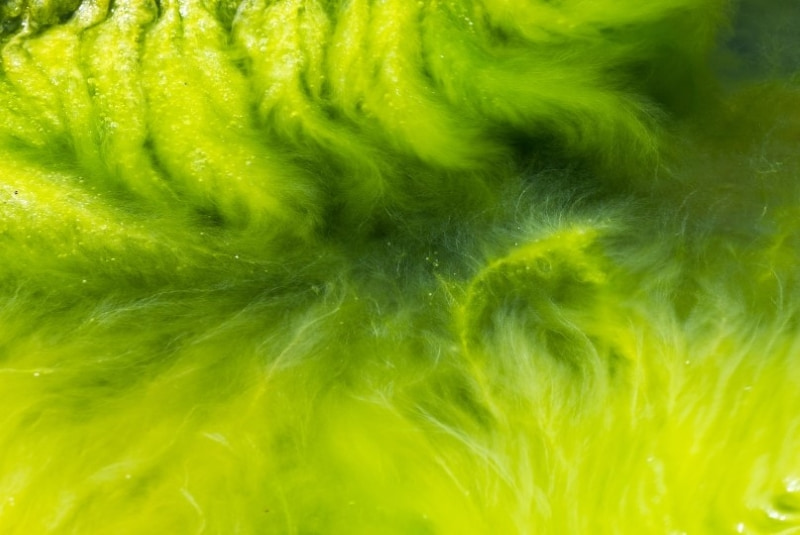
Furthermore, as part of their metabolic processes during nighttime or periods of darkness, both plants and algae consume oxygen while producing carbon dioxide (respiration). With high populations of algae present, oxygen levels may drop dramatically overnight causing root damage or even ‘drowning’ of your crops due to lack of oxygen.
Therefore understanding these dynamics helps us better grasp why preventing or controlling algal blooms is so important in maintaining a successful hydroponic operation.
How to Prevent Algae in Hydroponics Through System Design
When cultivating plants using a hydroponics system, taking preventative measures against the growth of algae is an important consideration. One such measure involves careful and strategic system design. By considering factors like light exposure and plumbing systems during the initial design phase, gardeners can help prevent algae before it even starts to grow.
Choosing Opaque Containers
Light exposure plays a crucial role in promoting or discouraging algae growth. Algae thrive in environments with excessive light and one common place for them to proliferate is on surfaces exposed to direct sunlight or artificial lights. The materials you select for your hydroponic system’s grow beds and reservoirs can significantly affect how much light those areas receive.
For instance, choosing materials that are non-transparent or opaque for your grow beds and reservoirs prevents light from penetrating these containers, reducing the likelihood of algae development. Materials such as solid PVC, high-density polyethylene (HDPE), or even metal are all good choices because they don’t allow light to pass through.
Block Light Exposure
If changing the material of your grow beds isn’t an option or if you need additional protection against light penetration, consider implementing light-blocking covers. Utilizing these covers over your system’s reservoirs can help limit the amount of light that reaches the water surface—a favored spot for algae to form.
Similarly, painting walls surrounding your hydroponics setup with dark colors will further minimize reflected light that could encourage algae growth. Using a non-toxic paint formulated specifically for indoor gardening use ensures a safer environment for both plants and anyone handling them.
Properly Design Plumbing Systems To Minimize Dead Zones
System design isn’t solely about managing lighting conditions—it also includes efficient planning around water flow within your setup. Dead zones – areas where water stagnates – provide ideal breeding grounds for algae due to lack of movement and potential nutrient buildup.
To avoid creating these dead zones in your hydroponic system, carefully consider how you will lay out pipes, pumps, drains, and other plumbing components. Aim for a design where water circulates steadily without pooling in certain spots. Implementing techniques like continuous-flow solution culture or utilizing systems designed to keep water moving constantly—like Nutrient Film Technique (NFT) or aeroponics—can effectively reduce dead zones thereby stymieing algal growth.
By strategically designing your hydroponic system with these considerations in mind—optimizing light exposure by material selection, using light-blocking measures, and minimizing stagnant water conditions—you’re well-equipped to prevent unwanted algae from invading your thriving plant oasis.
How To Keep Algae Out Of Hydroponics With Water Management Techniques
Proper water management in a hydroponic system is essential to prevent the growth of algae. This includes ensuring cleanliness, maintaining nutrient levels, and controlling microbial populations. Here are some techniques that can contribute to effective water management.
Implementing Effective Filtration Systems
The use of mechanical and biological filtration systems can effectively remove organic matter from your hydroponics setup, decreasing the chance for algae to thrive.
Mechanical filters work by physically trapping debris and particulates, while biological filters utilize beneficial bacteria to convert harmful waste products into less harmful substances. It’s important to regularly clean and maintain these filter systems to ensure their efficiency.
Related: So how do you keep hydroponic water clean? Learn here!
Monitoring & Adjusting Nutrient Levels
Nutrient buildup in your hydroponic solution can create an ideal environment for algae growth. By regularly testing the nutrient concentration of your solution, you can take action before this happens.
If you notice high nutrient concentrations, dilute your solution with fresh water or replace it entirely. Regular monitoring also helps you ensure that your plants are receiving appropriate nutrients for their growth stage and species.
Using UV Sterilizers & Ozone Generators
Ultraviolet (UV) sterilizers and ozone generators are powerful tools for keeping algae under control in your hydroponic system.
UV sterilizers expose water passing through them to UV-C radiation, which damages the DNA of microorganisms like algae, making them unable to reproduce.
Ozone generators produce ozone gas that when dissolved in water, act as a potent disinfectant against a wide range of microorganisms, including algae spores.
These advanced methods should be used with caution due to their potency and potential impact on beneficial microbes in your system.
How To Avoid Algae In Hydroponics With Temperature Control Strategies
Managing the temperature in your hydroponic system is a crucial part of preventing algae growth. Algae thrive in extreme temperatures, and controlling these can significantly inhibit their development. Let’s explore how to maintain optimal temperature ranges, both for the growth of your plants and to prevent the proliferation of algae.
Maintaining Optimal Temperature Ranges
The first step in managing temperature is understanding what range is best for both your plants’ health and minimizing algae growth. Most plants prefer a water temperature between 65°F to 80°F (18°C-27°C). Staying within this range is key not only for plant growth but also because it’s less conducive to algae proliferation.
While every plant species has its specific optimal range, staying within these generic parameters should serve most hydroponic gardeners well. Remember that temperatures at either extreme will not only stress your plants but also stimulate algal blooms.
Insulation
Insulation is an effective method for keeping your nutrient solution within the desired temperature range. It helps retain heat during cold weather and keeps out heat when conditions are too warm. Materials like foam board or reflective bubble wrap could be used for insulation purposes around your reservoir tank.
Cooling Fans
Installing cooling fans can be another beneficial strategy, especially during warmer seasons or in hotter climates. The fans provide air circulation which aids in lowering the system’s overall temperature, thus ensuring that it remains within a conducive range for plant health and algae prevention.
Chillers
In more extreme heat environments or larger systems, a chiller might be necessary. Chillers are devices designed to cool down your nutrient solution by pumping it through a refrigeration unit and returning the cooled solution back into the system. This ensures that even under harsh heat conditions, your hydroponic system maintains an optimal temperature detrimental to algae growth.
Heat Exchangers
Heat exchangers are more complex but very efficient solutions for maintaining ideal solution temperatures in any weather condition. These devices transfer excess heat from your nutrient solution to another medium—like air or water—that absorbs and dissipates the heat elsewhere.
In conclusion, managing temperatures effectively requires some investment in equipment and time spent on ongoing monitoring—but doing so will lead to healthier plants and reduce the chances of battling stubborn algae infestations.
How To Prevent Algae In Water Plants With Nutrient Solution Management
Once you have set up a hydroponic system, one of the most critical aspects to ensure its successful operation and, consequently, your plants’ health is nutrient solution management. Mismanagement can lead to many problems, including algae growth. Here’s how to manage your nutrient solution effectively:
Proper Nutrient Solution Preparation Using High-Quality Inputs
To start with, it’s essential to understand that the nutrient solution forms the lifeline for plants in a hydroponic setting, as it carries all the necessary nutrients directly to their root systems. Therefore, using high-quality inputs becomes paramount.
When preparing your nutrient solution, always use fresh water, as stale or contaminated water can be an ideal breeding ground for algae. Additionally, opt for high-quality nutrients specifically designed for hydroponics. The right nutrients should be easily soluble in water and contain all necessary elements required by plants, including Nitrogen (N), Phosphorus (P), Potassium (K), Calcium (Ca), Magnesium (Mg) and trace elements like Iron (Fe), Manganese (Mn), Zinc (Zn) etc.
Remember, improper or incomplete nutrition can stress plants and make them susceptible to issues such as disease and pests – including algae infestation.
Maintaining Balanced pH Levels
Algae thrive in certain pH conditions – typically alkaline environments. By maintaining a slightly acidic environment within your nutrient solution – usually a pH level between 5.5 and 6.5 for most crops – you can create an unfriendly environment for algae while still keeping it optimal for plant health.
A regular check on the hydroponic ph level is necessary, as fluctuations can occur due to numerous factors, including tap water quality, plant uptake of nutrients or evaporation losses. Use a reliable pH meter and adjust accordingly using pH up / down solutions available on the market.
Regular Monitoring & Adjustment of Nutrient Solution Parameters
It’s not enough just to prepare a suitable nutrient solution; consistent monitoring and adjustment are crucial components of effective management. This means keeping track of parameters like electrical conductivity (EC) using an EC meter, which indicates total dissolved salts or overall strength of the nutrient solution; temperature that should ideally be kept between 65-75°F; and light exposure with coverings used where necessary to prevent direct light hitting the reservoir which often triggers algae growth.
In conclusion: proper preparation using quality inputs; maintaining balanced pH levels; along with regular monitoring & adjustment form the trifecta of best practices when it comes to effective nutrient solution management in hydroponics – key preventative measures against algae proliferation.
How To Get Rid Of Algae In Hydroponics: Biological Control Methods
Biological control methods serve as an effective, eco-friendly solution to prevent algae growth in hydroponic systems. Essentially, they involve the introduction of certain beneficial organisms that either compete with algae for nutrients or directly consume them. Let’s delve into these strategies in more detail.
Introducing Beneficial Microorganisms
A powerful way to prevent algae growth is by introducing beneficial microorganisms, such as bacteria or fungi, into your hydroponic system. These microscopic allies outcompete algae for essential nutrients, thereby limiting their proliferation.
Bacteria and fungi are natural decomposers that break down organic matter into simpler substances. By absorbing vital elements like nitrogen and phosphorus, they reduce the nutrient availability for algae, hindering their development. Moreover, some types of beneficial bacteria emit substances harmful to algae, further inhibiting their growth.
The Role of Predatory Organisms
In addition to microbial competitors, predatory organisms can also be introduced into the hydroponics system to keep algae under control. Small aquatic animals like daphnia (also known as water fleas) are excellent examples of these predators.
Daphnia feed on microscopic plants and organisms, including algae, making them a natural biological control method against unwanted algal blooms. They eat the spores that float around in the water before they have a chance to attach themselves and grow. However, it’s important to maintain a balanced ecosystem within your system as excessive numbers of these creatures could affect plant roots or disrupt nutrient balances.
Use of Natural Algaecides
Natural algaecides derived from plant extracts or essential oils represent another safe and efficient biological control method against algae in hydroponics systems.
Certain plant extracts and essential oils exhibit strong antimicrobial properties, which can inhibit algal growth effectively without causing harm to your plants. For example, products made from barley straw release compounds when decomposing that work against many types of algae.
These naturally derived algaecides provide a sustainable option that reduces reliance on chemical treatments while ensuring the well-being of your hydroponic plants.
Preventing algae in hydroponics is crucial for maintaining healthy plant growth. By employing these biological controls – beneficial microorganisms, predatory organisms and natural algaecides – you can manage the issue effectively while respecting the environment.
How To Stop Algae Growth In Hydroponics: Use of Algae Inhibitors
Algae inhibitors are a crucial tool in preventing and killing algae in hydroponics systems. These substances work by creating an unfavorable environment for the growth and proliferation of algae, thereby keeping your system clean and free from potential damage. There are various types of algae inhibitors available, each with its unique properties and methods of application.
Hydrogen Peroxide
Hydrogen peroxide is a potent algae inhibitor that’s commonly used in hydroponic farming. This colorless liquid works by attacking the enzymes that promote the growth and development of algae cells, killing them instantly. Regular use of hydrogen peroxide can prevent the onset of algae bloom and maintain system efficiency.
To apply hydrogen peroxide into your hydroponics system, you should dilute it properly to avoid damaging your plants—generally using 3% solution is safe. It’s also advisable to apply it during the late hours, when photosynthesis is minimal, to avoid unnecessary oxygen boosts that might harm your plants.
However, keep in mind that while hydrogen peroxide is effective at eliminating algae, it does not discriminate between harmful microorganisms and beneficial ones, which might affect the overall ecosystem of your hydroponic setup. It is, however, very effective as a hydroponic system cleaner after you have drained the system for a thorough cleaning. Find out about hydroponics hydrogen peroxide use in more detail.
Barley Straw Rafts
Barley straw rafts represent a natural method employed to inhibit the growth of algae in water bodies like ponds and lakes. The science behind how barley straw works is fascinating—it releases certain compounds when decomposing which are toxic to different types of algae.
To use barley straw rafts as an inhibitor in your hydroponics system, place them on top of the nutrient reservoir while ensuring they don’t block any parts required for proper functioning. As they start decomposing over several weeks, they’ll release these compounds into the water supply—effectively suppressing new algal blooms without harming your plants.
Please note that barley straws only prevent new growth; it doesn’t eliminate existing algae or impact other forms of bacteria present within your system.
Grapefruit Seed Extract
Grapefruit seed extract is another natural option you can use as an algae inhibitor due to its antimicrobial properties. It contains bioflavonoids known for their ability to combat various pathogens including fungi, bacteria, viruses—and yes—algae too!
To use grapefruit seed extract as an algaecide, add about 10-15 drops into every gallon of water in your reservoir regularly. Regular usage will ensure a continuous presence of bioflavonoids which will discourage any potential algal bloom.
One major advantage grapefruit seed extract has over other inhibitors is that it’s completely organic and safe for both plants and humans alike, making it an ideal choice if you’re growing edible crops or have pets around.
Remember: While these inhibitors can greatly reduce the risk of having an algal bloom in your system, none can guarantee 100% prevention on their own—combining them with good maintenance routine such as regular cleaning will make sure you have a healthy hydroponics setup.
Maintenance and Cleaning Practices
Keeping your hydroponic system clean and well-maintained is essential for preventing the growth of algae. There are several maintenance tasks that should be performed regularly to ensure that your setup remains algae-free.
Regular System Maintenance Tasks
System maintenance in hydroponics is a regular and ongoing task, which requires attention to the grow beds, plant matter, and water flow.
Cleaning Grow Beds
Grow beds are one of the primary areas where plants derive their nutrients. Over time, these can become clogged with plant roots or debris, creating an environment conducive for algae growth. Regularly cleaning your grow beds will help keep them clear of any potential blockages and reduce the chances for algae proliferation.
Removing Dead Plant Matter
Dead or decaying plant matter can contribute significantly to algae growth in your system. This is because it decomposes into organic matter which serves as nutrient-rich food for algae. Therefore, it’s crucial to promptly remove any dead leaves or stems from your system.
Maintaining Proper Water Flow
Water standing still is a breeding ground for algae. Using air stones and ensuring proper water flow throughout your hydroponic system help keep the water oxygenated and hampers the development of stagnant environments where algae thrive.
The Importance of a Consistent Cleaning Schedule
A consistent cleaning schedule is vital in preventing algae buildup in hydroponics. Remember, preventive measures always outweigh reactive ones when dealing with such issues.
Algae spores can multiply rapidly under ideal conditions — light, warmth, nutrients — making it important to stop an infestation before it starts. Sticking to a regular cleaning schedule keeps all parts of your system functioning optimally while also denying conditions for algal bloom.
By maintaining cleanliness and regularly checking on individual components of the hydroponic setup, you can ensure optimal growing conditions for your plants while minimizing any chances of unwanted algal development.
Algae Prevention Tips for Different Hydroponic Systems
Keeping your hydroponic system free from algae is critical to ensuring optimal plant health and yield. The prevention techniques can vary based on the specific type of hydroponic system you’re using. Here, we will explore how to prevent algae in three types of hydroponic systems: Deep Water Culture (DWC), Nutrient Film Technique (NFT), and Aeroponics.
Deep Water Culture (DWC)
Deep Water Culture involves suspending plants in nutrient-rich water, which makes it a potential breeding ground for algae if not managed properly.
- Light Control: Algae thrive in light. Covering your reservoir with a non-transparent material can help keep out the light, reducing the chances of an algal bloom.
- Temperature Control: Keeping the nutrient solution cool helps prevent algae growth as they prefer warmer temperatures. Aim to maintain your water temperature between 65-70°F.
- Adequate Aeration: Implementing an air stone or diffuser can ensure that the roots get sufficient oxygen while reducing stagnant water areas where algae can grow.
Nutrient Film Technique (NFT)
In NFT, a thin film of nutrients flows over the roots of plants held by a slight incline.
- Regular System Cleaning: As NFT systems are exposed more than DWCs, regular cleaning is crucial to avoid any algal buildup.
- Proper Channel Design: Design channels to avoid pooling – where nutrients pool, so too might algae grow.
- Use High-Quality Filters: Make sure the water entering your system is clean; using a good quality filter can prevent introduction of algal spores.
Aeroponics
This system uses air or mist environment to grow plants without soil and minimal water.
- Frequent Mist Cycle Adjustment: Adjust your mist cycle often to avoid leaving too much standing water that could encourage algal growth.
- Use Lightproof Tubing and Reservoirs: Much like DWC systems, preventing light penetration reduces opportunities for algae formation.
- Timely Replacement of Nutrient Solution: Replace nutrient solutions regularly before they have a chance to harbor growing populations of algae.

